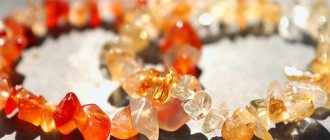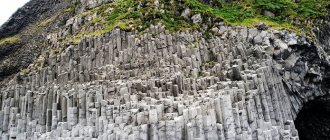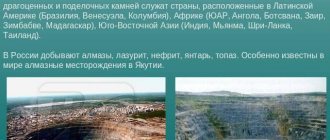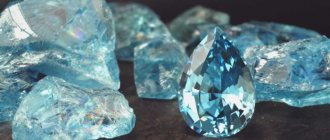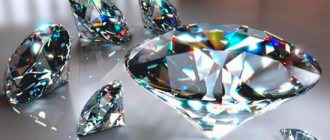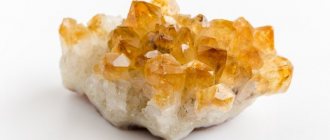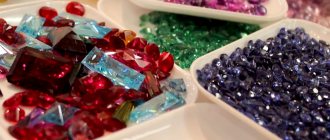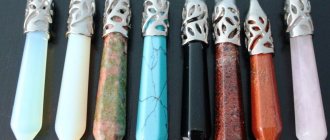All life on Earth is born, grows, multiplies and, as a result, dies, giving way to new life. Only the stones lie motionless for centuries, until, under the influence of external factors - water, wind, sun, precipitation, they disintegrate and transform into crunchy sand underfoot. But they still have a life history, although very different from the life cycle of living creatures. The process of mineral formation, which occurs constantly, has occurred in all geological eras. Therefore, seemingly unchanged stones grow, and some even multiply. True, there is a significant difference between the growth of solid rocks and living organisms.
Life of stones
When you think about the mysterious world of minerals, many questions arise, such as do rocks grow in the earth? Natural mineral life forms are ubiquitous and, in a broad sense, are crystalline substances of inorganic origin.
Stones can:
- be the remains of destroyed sedimentary rocks;
- arise as a result of metamorphism;
- originate in the depths of our planet.
Most rocks are formed at great depths in a magma chamber, the temperature of which is more than 1,500°C, and the pressure is tens of thousands of atmospheres. As the temperature decreases, the fiery liquid masses, moving to higher and colder zones, begin to solidify. Their transition to a solid state is accompanied by crystallization of substances. As a result, a large amount of minerals is formed. Crystals differ from each other in appearance, color, structure, composition and properties. This is how igneous rocks appear, which play an important role in the structure of the earth’s crust.
The resulting stones eventually end up on the earth's surface. Subject to sedimentation and weathering, they will change their shape and collapse, transforming into fragments and then into sand. Almost imperceptibly, covered with other sediments, they will sink deeper and again be subject to heating, transforming into new rocks or melting into magma. As a result, in nature, stones grow and change, collapse and again turn into natural crystalline substances of inorganic origin.
But not all minerals are formed at depths when exposed to high temperatures. Some form in low-temperature conditions near the earth's surface. During later post-magmatic processes, precious crystals grow, which are widely used in jewelry (emeralds, sapphires, rubies, etc.).
Of course, in most cases, growth can be explained by natural endogenous and exogenous processes of mineral formation and simple mechanical laws. Although there are still stones that not only grow, but also multiply.
Kidney suffering
People suffering from urolithiasis (KD) say: “If you have not experienced an attack of renal colic, then you do not know what real pain is!” Indeed, kidney stones, as well as inflammatory processes in the organs of the urinary system, cannot be classified as minor diseases.
Normal activity of all organs and systems is possible only if “toxic” metabolic products are promptly removed from the body. This function is performed by the large intestine, liver, skin, but mainly by the kidneys. If the kidneys cannot cope with their function due to illness, the entire body, all organs and systems suffer.
Trovants
These amazing rock formations can be found in many parts of the world, but they are most commonly found in Romania. Boulders, shrouded in mystery, fit perfectly into the romantic and mystical spirit that reigns on the territory of the state.
They have a streamlined shape of a ball or oval, and on the cut there is a spherical concentric zoning, similar to the cut of a tree, where the age rings are quite clearly visible. Locals call them “living stones.” According to legends, they are endowed with vital energy, able to grow, reproduce and breathe.
In more than 1,000 years, trovants grow by only 4-5 cm. But they are sensitive to changing weather conditions, and after heavy rainfall they grow significantly.
Scientific explanations
These fantastic assumptions are not groundless. Trovants can actually grow and change shape. Although what seemed supernatural can be explained from a scientific point of view.
Height
Trovants, in Romanian – trovanţii, are sandy nodules, in the center of which there is a core, the so-called seed. Hundreds of millions of years ago, this area was covered with water, and streams flowed from the mountains, bringing with them small grains of sand. In the depths of the earth, water and sand created cement rocks with a porous structure, so the composition of Romanian boulders is dominated by cementing clay-lime material. The stones gradually grew in concentric layers from the center to the periphery due to the layering of sandstone on the central formation, which could be an ammonite shell or an ancient shark tooth. A similar process occurs when a pearl is formed.
According to modern nomenclature approved by the International Mineralogical Association, pearls, which are formed in the shells of some mollusks, are not minerals, but are valued no less than precious rocks.
“Young” trovants weigh several grams and over hundreds of millions of years turn into multi-ton blocks with a diameter of up to 10 m. The growth rate is low. In addition, they slow down and speed up, depending on environmental conditions. Moreover, the smaller the stone, the faster it increases in size. During seismic activity, weathering and erosion of the rocks in which they are located, trovants appear on the surface.
After precipitation falls, they visually grow. The upper looser layers absorb rain moisture. Due to the increased content of mineral salts that interact with water, a swelling reaction occurs inside and it turns out that miracle stones actually grow.
Breath
By “breathing” we mean that the trovant is capable of changing in diameter throughout the day. At night it becomes larger, as if inhaling, and during the day it gradually becomes smaller, exhaling. "Breathing" is also explained by natural changes in humidity. At night it becomes cooler and moisture condenses on the surface of the boulder, which is absorbed by loose layers. During the day, under the influence of sunlight and wind, it evaporates and the trovant decreases.
Reproduction
In addition, the Trovants gave an answer to another interesting question: do stones reproduce? The fact is that bulges can form on the surface of the boulder, especially after heavy rains. As it turned out, a new seed center is activated under the surface, around which layers grow. The rounded formations quickly increase in size, and the trovants themselves begin to resemble giant ginger roots. Over time, they grow so much that, under the force of gravity, the formations simply fall away from the parent boulder. But there is also an explanation for this phenomenon. Simply due to its heterogeneous composition and with an abundance of moisture, sandstone is capable of redistribution within the nodule.
Legends
Despite all the scientific arguments, trovants attract fans of mystical secrets from all over the world. In traditions and legends, local people speak of the “animation” of the Trovantes. It is believed that boulders and their fragments should never be moved from their native places. Although the bravest Romanians roll them into their yards and place them as “watchmen” at the gates or use them for decorative purposes, and some even use them as grave monuments. Although trovants still do not have a soul, according to legend they can contain the soul of an innocently murdered person.
Museum
In 2005, in the Romanian outback, in the area of sand quarries near the village of Costesti, on an area of 1.1 hectares, the Valcin authorities, with the money of geology students, opened the Trovant Museum-Reserve. A large concentration of blocks of unusual shape, different in color and impressive in size is concentrated here. Anyone can get acquainted with the exhibition, and in bad weather even watch the growth of unusual stones.
Open-air museum
Today the trovants are one of those attractions in Central Romania that tourists from all over the world come to see. In turn, resourceful Romanians make souvenirs and decorations from small trovants, and therefore each guest has the opportunity to bring with them a piece of the stone miracle from their trip. Many owners of souvenir stones claim that commemorative items made from trovants, when wet, begin to grow, and they sometimes move around the house without permission, which produces a rather eerie impression. The largest accumulation of growing stones was recorded in the Romanian county (region) of Valcea. On its territory there are trovants of all shapes, sizes and colors. Due to the great interest of tourists, in 2006, the only open-air museum of trovantes in the village of Costesti was created by the Valcin authorities.
Return to contents
Spheroids in the world
Massive spherical nodules of a nature similar to trovants are found in the sands of the beaches of New Zealand, in Kazakhstan on the Mangyshlak Peninsula, on the shores of the Pacific Ocean in California (USA), in the Valley of the Moon in Argentina, off the Pacific coast of Costa Rica, as well as in Brazil and Mexico , Egypt, Israel, China and other countries.
A fragment of a strata sandstone concretion, formed by the accretion of more than 50 spherical mineral formations, called the “Maiden Stone” is located in one of the most popular recreation areas in Moscow - Kolomenskoye Park. The pagans used it as an altar on which they made sacrifices to the gods.
Russian "trovants"
Mineral spheroids are also found in Russia. Round blocks come out of the ground in the vicinity of the village of Andreevka, Oryol region, and in the village of Boguchanka in the north of the Irkutsk region. In the section of a coal mine there are stone spheres that seem to be made of metal. Spherical boulders were found near the village. Wet Olkhovka in the Volgograd region, in the Izhma river (Komi Republic), as well as on the islands of the Franz Josef Land archipelago.
Of course, our “trovants” do not have such impressive sizes as Romanian boulders. In addition, they contain quartz-chalcedony materials, so they do not react to weather changes and do not reproduce.
4.4 / 5 ( 11 votes)
Size and shape matter
Landscape stones have the following classification:
- A block
is a stone up to 50 cm in diameter with faceted, sharp edges. - A boulder
is a rounded stone up to 50 cm in diameter. - Cobblestone
is a rounded stone up to 20-50 cm in diameter. Backfill (crushed stone) is a mass of crushed stones with sharp edges 5-10 cm in diameter. - Pebbles
are flat-rounded stones. Pebbles are divided by origin: river and sea. In industrial conditions, pebbles are made from granite, marble and quartzite. The size of the pebbles is determined using fractions. So, for example, pebbles of fraction 2-4 means that this stone mass will contain round stones from 2 to 4 cm in diameter. Pebbles of fraction 5-10 means that there will be stones from 5 to 10 cm in diameter. - Crumb
is the smallest form of crushed natural stone. Usually this is marble chips. - Flagstone
is slabs of natural stone of arbitrary shape that have approximately the same thickness. The thickness of the flagstone varies from 10 mm to 70 mm. - Rubble stones
are small rocks that are mined in quarries or in the mountains.
Any size can be used in landscape design. Boulders and cobblestones will harmoniously fit into an alpine hill, cobblestones will decorate flower beds and become the basis for a retaining wall, pebbles are suitable for creating a complete space for a recreation area.
How to properly use landscape stone on the site?
1. Create a project.
In order for the stone to become an integral part of your landscape relief, you need to think through the concept and design, taking into account the size of the site, the location of the main buildings and style. A five-meter marble Apollo will look comical in a small area with a wooden house, and a miniature rock garden will simply get lost surrounded by huge pine trees.
2. Calculate the required amount of stone
. This is one of the most important tasks: if you buy less stone than you need, you will have to buy more. But it is not always possible to find exactly the same natural stone. Or you might accidentally buy more than you need. Considering the cost of some types of stone, this is, at a minimum, not economical.
3. Lay the stone correctly.
A correctly laid stone is pleasing to the eye and does not cause any problems. But errors during installation not only “smear” the decorative effect of the entire composition, but can also cause damage to plants. At best, the stone element will need to be removed or moved. At worst, you will have to replace the plants.
4. Take into account stylistic features.
A competent combination of species will help emphasize the beauty of the plantings, and the logical repetition of selected combinations throughout the entire territory of the site will allow you to design the landscape in a certain style, avoiding the effect of fragmentation.
5. Maintain the level.
Sometimes the stone element turns out to be crooked. This is due to the fact that the shrinkage of the structure was not initially taken into account or the surface on which it was installed was incorrectly prepared. Even more often there are cases when the stone elements do not match the level of the lawn. Such mistakes are striking and make the area sloppy, even if it is very expensive material surrounded by luxurious plants.
The choice of material and landscape solution completely depends on the taste and wishes of the customer. The stone adds relief, uniqueness, reflects the individuality of the customer and helps create a design full of harmony.
If you want to create a landscape project for your site quickly and professionally, we invite you to the landscape studio of our garden center. Professional designers will bring any of your ideas to life, think through zoning, help you choose plants and materials: your beautiful garden will delight you for years and delight your guests.
Read more about
